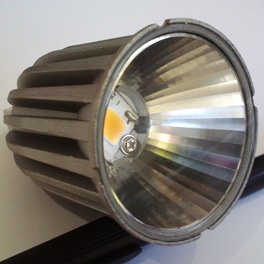 Loading... Please wait...
Loading... Please wait...- About Us
- LED Flood Lights
-
LED Lighting Projects
- Tennis Court LED Lighting Projects & Upgrades
- Netball Court LED Lighting - Case Studies & Projects
- Sporting Oval & Sports Field LED Lighting - Projects & Examples
- Lawn Bowls LED Lighting Projects & Upgrades
- General Area and Security LED Lighting - Projects & Applications
- Factory and Warehouse LED Lighting Projects & Applications
- Industrial LED Lighting Applications and Projects
- Help & Information
- Blog
- Contact Us
- Home
- Help & Information
- LED Buying Guide
- Understanding LED Lighting
- LED Light Optics - Beam Angle, Lens Type, Reflector Type
LED Light Optics - Beam Angle, Lens Type, Reflector Type
Projected LightThe projected light from an LED bulb is affected by a number of factors including:
We have discussed the concept of the quantity of light produced by the LED luminaire elsewhere. In this section we describe the distribution of the projected LED light. Beam AngleFirstly LED light bulbs like their incandescent or typically halogen counter parts are available in multiple beam angles from as low as 25° to as high as 135° as determined by the lens type used in the bulb. Smaller beam angles such as 25° to 45° will produce a more focused beam of higher intensity and are more suited to spot lighting in commercial or artistic applications. Buildings with very high ceilings of 3m or greater may also benefit from more focused beam angles. Many manufacturers such as Osram or Philips produce predominantly 35° MR16 bulbs presumably due to their focus on commercial markets where businesses can afford to pay for their globes. Larger beam angles from 60° to 135° will produce a broader beam suited for most residential applications or ambient lighting in commercial applications. They are also useful in lower ceiling applications (< 3m). Whereas a 45° beam spread may be more useful in higher ceiling applications or for corridor lighting. A LED light bulb with a narrower beam angle may also seem brighter but the overall total luminous flux will be the same as the same LED light bulb with a lens which produces a wider beam angle. The brighter light is created by focusing the light within a more localised area, much like a magnifying glass can be used to focus the light of the sun. This is sometimes referred to the angular intensity of the light. Typically, LED light bulbs of 120° or greater are used in high light dispersion applications in place of traditional incandescent or CFL light bulbs or T5, T8 and T12 fluorescent tubes. While 60° to 90° LED light bulbs are more common halogen downlight replacements. The illustration below shows the effect of different lens sizes in our MR16 8W Sharp downlight bulb. Notice in the illumination-lux diagrams that at 2.5m we have a more focused beam spread or spot diameter of 1.06m and 130lux for the 24° lens, whereas for the 60° lens at 2.5m we have 80lx but a much larger beam spread of 2.88m.
Lens TypeAside from altering the angle of the light being emitted from the LED and therefore altering the beam angle, the lens is generally of two types:
The limitation of the opaque or Fresnel lens is that there is a reduction in lumens depending on the opacity and quality of the lens. The Fresnel lens can also have the effect of scattering the light such that narrower beam angles can seem slighting wider, for example a 45° LED light bulb with a Fresnel lens appears more similar to a 60° LED light bulb with normal opaque lens. See an illustration of a clear lense versus opaque lens below. Note that we do not provide you with a clear lenses unless it is specified by the project. Please contact us if you are interested in clear lenses.
Reflector typeSome LED lights, particularly LED downlights will have a reflector of varying dimensions and surface reflection which can further act to scatter or focus the light depending on the design of the reflector. In the scattering type, once again a 45° LED light bulb with a reflector can appear more similar to a 60° LED light bulb without a reflector. The use of a reflector can also allow the elimination of the lens to reduce the losses.
Megaman Reflector (No lens) |





